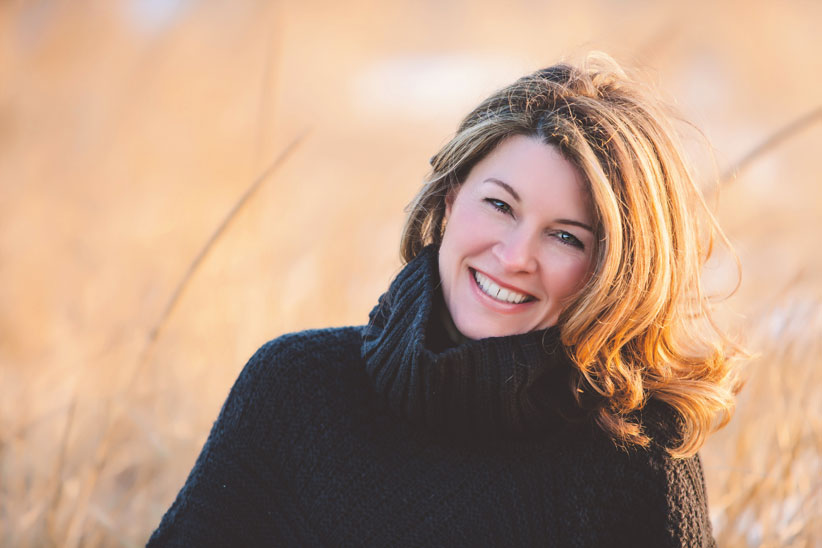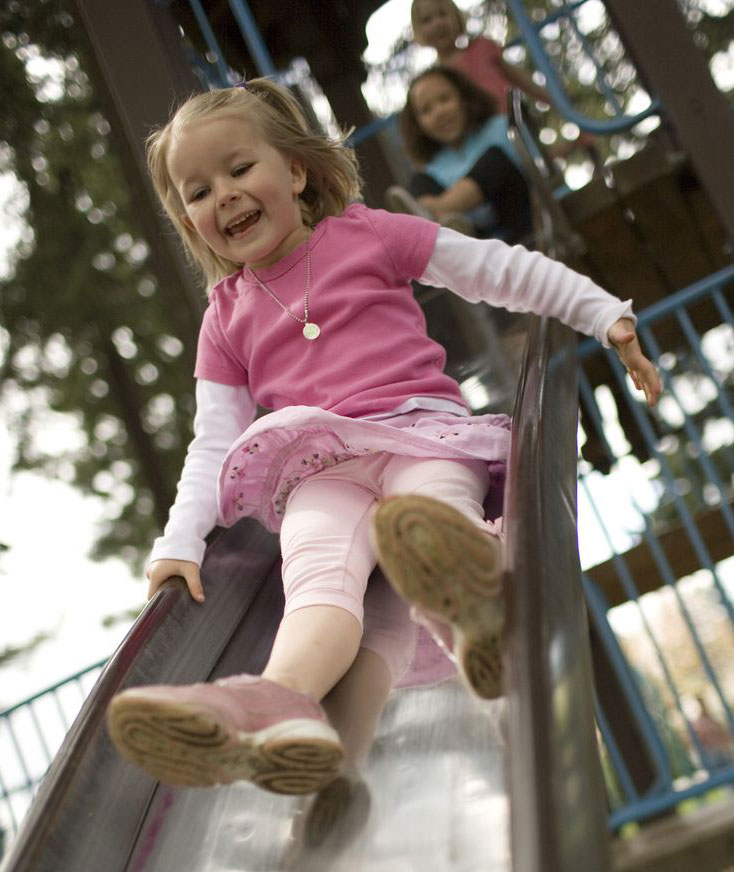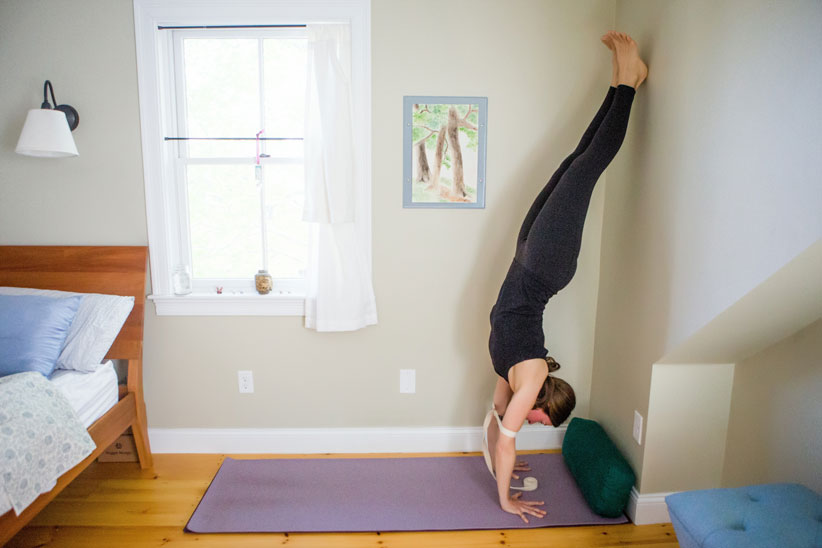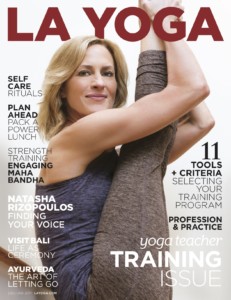When we play, we come back to harmony with ourselves and life.

Photo by Amanda Ambrose
Do you recall how much fun it was swinging on the monkey bars as a child? The sense of carefree abandonment and sheer delight? Letting go, letting your brain and thoughts release as your blood rushes to your head and heart. I used to love this sense of lighthearted freedom that those monkey bars, handstands, and cartwheels brought. This playful change in perspective, seeing the boundless sweeping sky from the ground, realizing you are a small part of this vast and incredible, wondrous world: restored peace.
When we play, we come back to harmony with ourselves and life. For children play comes naturally and helps them to learn and grow. As adults, many of us lose touch with our playful nature. Being able to tap into that part of ourselves can bring about rich creativity, pure joy, renewed balance, a revitalized being.
Now much older, the longing for that end result is still enticing, even necessary. Who doesn’t want to shake things up, get a new perspective, hang upside down like the monkeys in a state of beguilement, and realize you are more than your thoughts, emotions, and parts? We all need to get out of our frontal lobes—ironically, our monkey minds—and connect to the other part of our brain that isn’t scheduling, achieving, agenda-ing, and working towards a goal. Turn off insistent ‘vritti’ (chatter), get back in touch with our inner child, connect to our playfulness and creativity: a reset. You can see how being upside down like this still has a strong allure, even at age forty-seven.
However, back in my mid-thirties, I was at a point physically where I thought this was lost to me for good. Newly married and living in Brighton, I had been enjoying a successful career in technology, sweating in Baptiste’s hot yoga Cambridge studio, biking to work and taking 6:00 AM dance classes. After the birth of my daughter, my pelvis was badly injured, followed by herniated discs, then a c-section for my son. In addition, I was grappling with occasional dizziness from low blood pressure and low iron. I went from feeling like an athlete, to someone who got dizzy when they stood up. Flexibility was pretty much gone, and any hope I had of this type of upside down play was out of my realm. Handstands (and the like) were for some other body, not mine, it seemed.
Despite this, I found my way back to my mat. It wasn’t with the end in mind of some sort of major achievement—I was doing it because it helped with pain management. But here’s the funny thing… somewhere along the way, a healing took place that no traditional medicine or discipline had accomplished for me: healing from the inside. My mat became a check-in: a place to observe and discover, explore and learn: where I was tight, where I was holding on, where I needed to let go. Trying not to judge, not to be critical, not to put myself down. This remains my true yoga practice. A curious non-judgemental observer.

I found myself drawn to a new way of thinking. “Consistent Diligent effort, non-attachment to results.” (Yoga Sutra 1.12, Abhyasa Vairagya). A wise Pattabhi Jois, the founder of Ashtanga yoga was known for saying, “Practice and all is coming.” It’s the yoga. It’s practice. As I began to build strength in my front and back body, connecting to my lost core, finding intelligence, integration, and interconnection in my muscles, I wasn’t thinking about results. And maybe that’s because I didn’t think the results were attainable, at first. It was just… Patience. Practice. Play.
Non-attachment to handstand or any other “fancy pose” was fairly easy, in the beginning. I had a beginner’s mindset of pure curiosity and observation without judgement. I wasn’t considering the possibility of being able to do anything advanced. However, with this consistent practice, my body grew stronger and more flexible. When I saw an inkling of possibility, that I was actually strong enough to do handstand (or the like), my mind freaked out. It was not onboard with going upside down like that. I had never thought it possible, and now that it was, that I potentially could, I was terrified. I was afraid I would re-injure my body: my back, my pelvis, my center. That feeling that I was breaking in half was returning. This fear was very real, and very strong. It took up a place inside me, settling in like a fog. It kept me from reaching the wall—although in theory I could physically could do it, I kept checking myself mid-kick. “Don’t worry, if you don’t want to reach the wall, you won’t,” my wise teacher said in class one day. So true. So me.
There’s a quote I love, from Frank Herbert’s sci-fi novel, Dune: “Fear is the mind-killer… I will face my fear. I will permit it to pass over me and through me. And when it has gone past I will turn the inner eye to see its path…” The trick is decoding that fear: is it trying to tell you something, or is it just the mind-killer? “There are times when we need to push past our dread and resolve—with our heart pounding in our chest—to act. At still other times, we may need to identify the actual sources of fear—past or present—that may be obscured from our view,” writes Harriet Lerner. For a long time I wasn’t sure if what I was feeling was a valid warning from my body, or just something I’d fixated on due to pain.
It’s through facing the fear that we have the chance to learn and grow. Challenging poses can be great teachers in that they require our complete attention, which is the yoga. What makes handstand yoga and not gymnastics or circus acrobatics? Your attention and intention. When faced with a challenging pose there is no option but to stop that chatter. You have to focus so absolutely, that without realizing it, your brain is completely present—no ‘vritti’ are possible here. Playing with the edge requires all of our concentration. It requires our entire body and mind to be working in harmony, unison. Yes, I could throw myself up into handstand—I’ve seen plenty of people do it. But I wanted grace, not just a result. I wanted my body to kick up to handstand with ease and steadiness, a marriage of both the mind and body.
The physical outer yoga practice becomes an inner exploration, a learning opportunity. And how you approach it reflects your life. Your yoga mat becomes your mirror. Like a child not worrying about results, try to approach it playfully… just the joy in the moment.
So I practiced my yoga, worked on getting out of my head. My home practice became central. I placed my lavender Manduka mat right next to our bed on the pine-wood floor, under the window reflecting greenery. Cork blocks and pre-measured Half-Moon straps ready to go.

Photo by, Amanda Ambrose
This is what my Vinyasa, my step by step progression, to handstand looked like, one breath at a time:
STEP 1, plank on the forearm and baby cobra: I got on my mat every day (and continue to) for plank on the forearm and baby cobra. Consistent diligent effort. No matter my attire (sometimes still in my PJs or trickier, in tight jeans). No matter if it was first thing in the morning (preferred time) or the last thing at night (my husband would see me practicing and smile, amazed and impressed with my resolve—motivating and inspiring him and our kids).
STEP 2, handstand prep: In time, I built up the courage to do handstand prep (so hard, still so hard—requires more strength than handstand, but is less scary). I never thought I could get upside down like this when I first started consistently practicing, but again the lesson of ‘letting go of results’ proved me wrong, for all of a sudden, there I was.
STEP 3 handstand prep raising one leg away from the wall, then the other: Eventually, in handstand prep, I built up the courage to raise one leg at time. This took several additional months to get here; and I never thought I would. Again, letting go of results. The lesson continues to be my life practice.
STEP 4, strap and cushioning: It wasn’t until I started using a strap around my elbows, a cushion in front of my head, and kicking up with one leg, that I was able to get further. But when I got to that “freaky” moment and was close to coming over my pelvis, where I thought my body might break in half, I would always come down.
Despite all my plank on the forearms, all my baby cobras which I was doing every day… my mind still couldn’t get on board. I knew I was strong, but I didn’t trust it.
When I had an assist with handstand, I didn’t like the feeling of being upside down. I felt dizzy, disoriented, and pretty awful. There wasn’t anything playful or rejuvenating about it. But these inversions are so important in yoga. I knew I was missing something. Then I read an article that if you get dizzy in inversions the best thing you can do is DO IT, again and again—get used to the idea of being upside down, to overcome dizziness. Begin with something easy like hanging off monkey bars to get over the “ugh” feeling. Huh, I thought. This could work.
STEP 5, chair supported headstand: I didn’t have monkey bars around, but recalled a version of headstand (using two chairs) that seemed like a good fit. At first, it was super scary, but again once I let go of the fear (and I had my husband standing next to me, his presence reassuring), all of a sudden I was up. The next day I did it on my own. And the next, I stayed up for a minute. Eventually, I found myself in utter bliss up there for 5 minutes. Now I knew handstand was an option.
STEP 6, uddiyana bandha and drishti: I continued to work on finding uddiyana bandha—connecting to my root lock, and a focused soft gaze (drishti). I stopped focusing on the end result, and instead put my mind focus at my core, my center, which was what finally got me up.
One Tuesday afternoon, practicing alone at home, I stopped thinking about reaching the wall. Instead I focused my mind on engaging mula bandha and my core together, and gave my eyes a laser-like drishti, the landing spot. But even more importantly, everything came together. I knew inside and out that I truly could do this. That I had this. It was just a handstand. That it was child’s play. And, that was it. All of a sudden both feet were at the wall, and I held it for a breath. When I came down I couldn’t believe it. Three years of working strength, muscle intelligence, overcoming fear, disbelief in my body’s capability, to arrive. I had to do it two more times, just to be sure I wasn’t dreaming.
Then, I cried. I cried for the all the hard work, the consistent diligent effort and non-attachment to results (Abhyasa Vairagya). And then, I felt something I haven’t felt in a long time. It was wholehearted joy, harmony, peace permeating through me with the echo of possibility. Anything is possible. Anything. And this feeling is what yoga has taught me. The practice has nothing to do with handstand. Who really cares? It has everything to do with the process.
We all have our handstands. You never know what will come. Here is to life’s possibilities. Do the handstands of your life. Play on.
“This is the real secret of life—to be completely engaged with what you are doing in the here and now. And instead of calling it work, realize it is play.” ― Alan W. Watts
 It is with a grateful heart that I thank the remarkable teachers who have shared their wisdom, compassion, and guidance, especially Natasha Rizopoulos. Profuse appreciation to my husband, two children and bunny, who’ve had my back 101 percent.
It is with a grateful heart that I thank the remarkable teachers who have shared their wisdom, compassion, and guidance, especially Natasha Rizopoulos. Profuse appreciation to my husband, two children and bunny, who’ve had my back 101 percent.
Christina Gardner-Burns, RYT 500, PRYT, and M. Ed., is a certified yoga teacher in the Vinyasa style, as well as a certified kids yoga teacher. She teaches on the North Shore area of Massachusetts, where she lives with her husband, two children, and one particularly adventurous rabbit. Her website is Yoga for Every Body, where she’s always happy to answer questions and make new connections, and she can be found on social media, at Facebook and LinkedIn.
